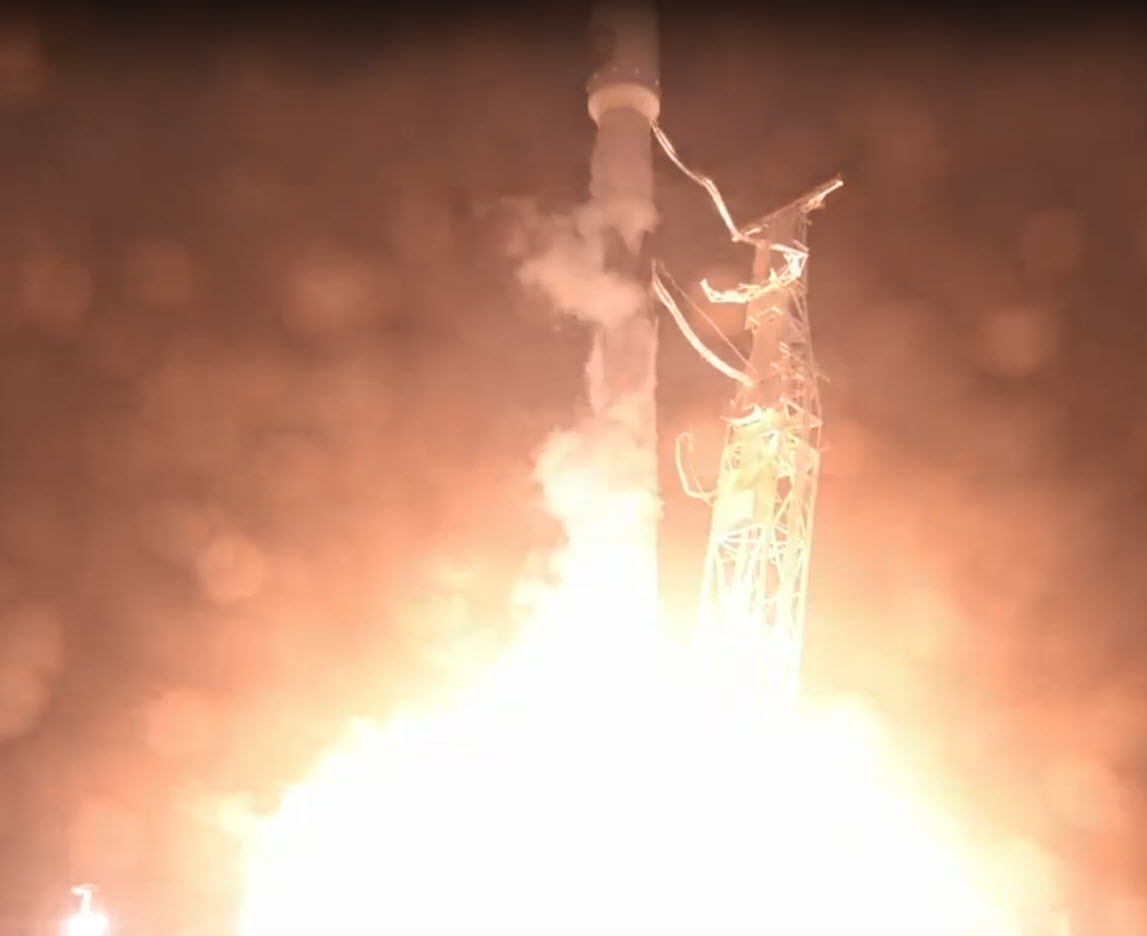Hawthorne-based rocket maker SpaceX successfully deployed its latest satellite into orbit during an evening liftoff from Vandenberg Air Force Base that lit up South California’s skies.
Sunday’s launch of the workhorse Falcon 9 rocket represented several milestones for the company led by Elon Musk. It was the second re-flight of a Falcon 9 first stage booster, and it was also the first to return to the launch site, not to a barge offshore.

Viewers were able to see the rocket fire into the upper limits of the Earth’s atmosphere before separating and releasing the unmanned spacecraft.
The booster rocket descended back to the launch site in a synchronized controlled burn. Legs extended out from the rocket and it landed successfully on a pad near where it took off at the base near Lompoc.
A tale in four parts. Congrats @SpaceX pic.twitter.com/GiAvrjGoUi
— Bobak Ferdowsi (@tweetsoutloud) October 8, 2018
Earlier this week, SpaceX completed a static fire test of its Falcon 9 rocket at the launch site, essentially a dress rehearsal of the actual launch including a brief test firing of its 9 Merlin engines.
Earlier this week, the Air Force warned in a statement the event would cause up to three sonic booms on re-entry.
While SpaceX has successfully recovered 29 first stage boosters — the only commercial spaceflight company to do so — those have all been onto drone ships at sea.
Sunday’s recovery represents the first to return to the landing area. The stated goal for SpaceX is to have the first stage booster cleaned and ready to be used again in 24 hours.
The launch set social media abuzz, as a light show filled the skies over the region with bizarre, morphing, ghost-like shapes of multiple colors.
A look at the @SpaceX Falcon 9 rocket, as it launches into the sky, from my apartment in #StudioCity. @NBCLA pic.twitter.com/NY8lB3xhYJ
— Joe Studley (@JoeStudley) October 8, 2018
This weekend’s launch propelled the first of two satellites into space for the Argentine Space Agency, which will perform radar observations from low-Earth orbit, the primary goal being to mitigate the effects of natural disasters.
Meanwhile, activity in San Pedro at the Port of Los Angeles has been heating up with technicians refitting the giant “octopus arms” of Mr. Steven, the specialized ship built to catch the nose cone fairings as they glide back to Earth.
Not your usual evening sky, as the launching of a satellite by SpaceX can be seen over Disneyland pic.twitter.com/MyvG1H2QbJ
— John Devine (@JohnJDevine) October 8, 2018











